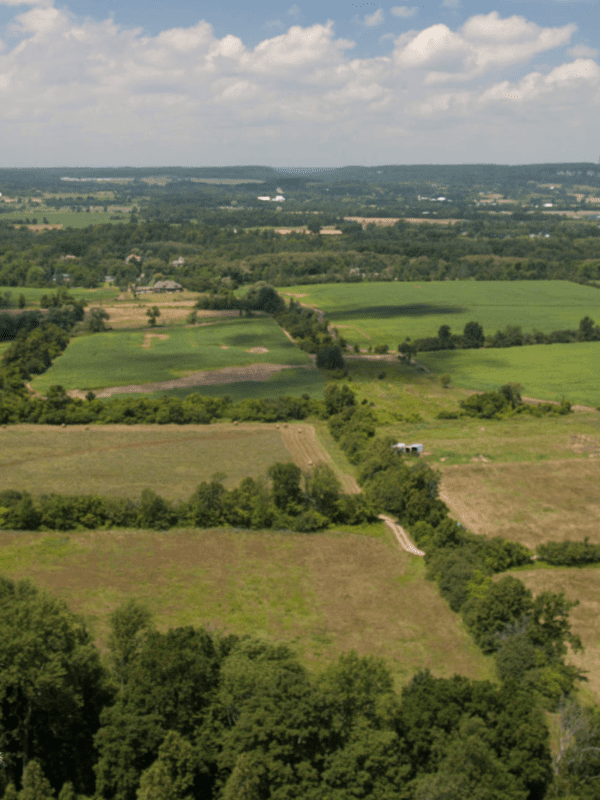ENVIRONMENTAL DEFENCE AND ECOJUSTICE
Toronto | Traditional territories of the Mississaugas of the Credit, the Anishinaabeg, the Haudenosaunee, and the Wendat – Newly obtained documents released by Ontario’s Ministry of Municipal Affairs and Housing as a result of a series of freedom of information requests show that it was partisan Minister’s Office staff – not civil service experts – who directed changes to municipal Official Plans in ways that favoured select landowners and sprawl developers. The documents also show that their lands were designated for development despite being rejected by both municipal planners and provincial Municipal Affairs planning experts. The documents also offer evidence that Ministers’ offices, other than that of Housing Minister Steve Clark, were involved as early as January 2022, prior to the June 2022 election, and yet the government still kept Ontario voters in the dark.
The documents relate to proposed changes to official plans for Niagara, Hamilton, Halton, Waterloo, Peel, York, and Durham Regions.
In November 2022, the Ontario government announced that it would force through massive expansions of urban boundaries in municipalities across the province, despite those municipalities having determined those expansions would be unhelpful and even counterproductive in boosting housing supply. This includes expanding Halton’s settlement boundary by more than 3,000 hectares, and expanding Hamilton’s city boundary by 2,200 hectares.. These expansions were done in addition to the land removals from the Greenbelt and similarly lacked a fact-based rationale as more than ample lands were already available for development to meet the province’s home building targets. In Hamilton, forced boundary expansions were even accompanied by a forced reduction in the minimum share of housing Hamilton’s Official Plan committed to add within existing settlement boundaries.
In response, Ecojustice – on behalf of Environmental Defence – made four freedom of information requests for documents dealing with urban boundary and Greenbelt changes that occurred in late 2022. The groups have obtained four orders from the Information and Privacy Commissioner in relation to these requests as a result of appeals when the Ministry failed to respond. Of the four requests, two have now resulted in partial releases.
Last week, just days before the release of official plan documents, the Ontario government announced that it was reversing its proposed changes to urban boundaries, and legislation was tabled to reverse the Greenbelt changes. These u-turns are necessary and welcome, but both the absence of any credible good faith reason for these boundary expansions and lack of transparency regarding how they were made raises serious and lingering concerns as to what influence real estate investors and sprawl developers have at the highest levels of government over our keystone land use planning policies.
The partial release reveals the chaotic, developer-led process that did an end-run around the normal planning approval process and was driven by political staff in the Minister’s office. The documents show that Minister of Municipal Affairs and Housing’s Chief of Staff Ryan Amato directed senior ministry staff to keep their mouths shut about the changes and made clear that maps showing how some of the preferred developer properties had been moved forward needed to be provided to the Premier’s Office. All of these changes, which favoured particular developers, were rushed through without proper consideration of the impact on existing planned land uses, sensitive natural features, water or agriculture.
Many of the documents, including ones from September and early October, are redacted on the basis that they are Cabinet privileged, even though the Minister and the Premier have claimed under oath that they did not know about the changes until late October 2022. These redactions call that timeline into question.
Tim Gray, Environmental Defence executive director, said:
“Affordable homes are desperately needed inside our towns and cities. The Provincial government blocked Hamilton, Kitchener-Waterloo, Halton and other municipalities in these efforts in favour of expensive farm, forest and wetland eating sprawl that financially rewarded their developer friends. The Ontario public deserves an answer about why this happened”
Laura Bowman, Ecojustice lawyer, said:
“The government continues to refuse to disclose a wide range of information about the process that led to the Greenbelt removals and forced urban expansions into greenspace. The public deserves to know the truth about the removals.”
Background:
- In late 2022, Ecojustice, on behalf of Environmental Defence, brought a judicial review of the government’s decision to force Hamilton to expand its urban boundary. That litigation, which argues the decision was unreasonable and unlawful, is ongoing.
- Earlier this month, the same organizations also brought a judicial review seeking to enforce one of the Information and Privacy Commissioner’s orders to release Greenbelt records. The Commissioner has ordered the government to take steps to retrieve deleted records in that case.
Full FOI partial packages are available here.
About:
ENVIRONMENTAL DEFENCE is a leading Canadian advocacy organization that works with government, industry and individuals to defend clean water, a safe climate and healthy communities.
ECOJUSTICE uses the power of the law to defend nature, combat climate change, and fight for a healthy environment. Its strategic, public interest lawsuits and advocacy lead to precedent-setting court decisions and law and policy that deliver lasting solutions to Canada’s most urgent environmental problems. As Canada’s largest environmental law charity, Ecojustice operates offices in Vancouver, Calgary, Toronto, Ottawa, and Halifax.
– 30 –
For more information or to request an interview, please contact:
Carolyn Townend, Environmental Defence
media@environmentaldefence.ca
Sean O’Shea, Ecojustice
soshea@ecojustice.ca







